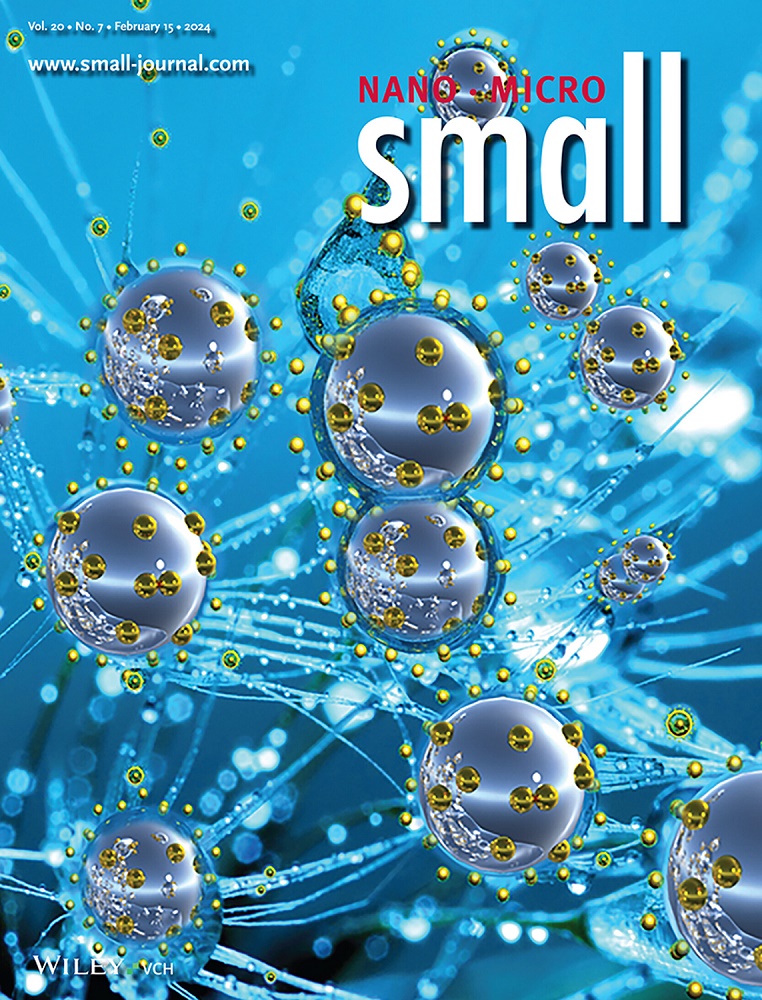工程CeO2@Ru纳米球通过大小-金属负载协同作用,以提高化学发光效率的敏感免疫层析分析。
IF 13
2区 材料科学
Q1 CHEMISTRY, MULTIDISCIPLINARY
引用次数: 0
摘要
探索基于化学发光的免疫层析分析(CLICA)有利于敏感的护理点检测,但低效率的CL效率(ΦCL)和较差的可视化阻碍了CLICA的进展。本文通过“尺寸-金属负载”协同策略设计了CeO2@Ru纳米球(CeO2@RuNSs),以显着增强ΦCL在鲁米诺- h2o2基CLICA中对赭曲霉素a (OTA)的敏感检测。作为传感器核心的CeO2@RuNSs通过尺寸调节、金属沉积、加载优化等方法系统探索其结构-ΦCL关系。系统研究表明,大尺寸CeO2在三种粒径中表现出优异的过氧化物酶样活性,随后Ru掺杂加上负载调节协同提高了催化性能,达到了比小尺寸CeO2高8.3倍的ΦCL (10.59×10-3 einstein /mol)。此外,CeO2@RuNSs-labeled抗体作为探针构建具有卓越强度的CLICA,而CL系统组件经过精心优化以实现有效的可视化。令人印象深刻的是,通过将CeO2@RuNSs-CLICA与基于智能手机的读出器集成在一起,设计了一种便携式检测设备。优化后,该方法的检出限可低至0.06 ng mL-1,远低于传统金纳米颗粒ICA (0.23 ng mL-1),具有良好的特异性和重复性。最终,该传感器在小麦和大麦样品中表现良好,回收率为92.1% ~ 114.9%。本文章由计算机程序翻译,如有差异,请以英文原文为准。
Engineered CeO2@Ru Nanospheres via Size-Metal-Loading Synergy to Enhance Chemiluminescence Efficiency for Sensitive Immunochromatographic Assay.
Exploring chemiluminescence-based immunochromatographic assay (CLICA) is favorable for sensitive point-of-care testing, yet inefficient CL efficiency (ΦCL) and poor visualization hinder the progress of CLICA. Herein, CeO2@Ru nanospheres (CeO2@RuNSs) are engineered through a "Size-Metal-Loading" synergistic tactic to significantly enhance ΦCL in luminol-H2O2-based CLICA for sensitive ochratoxin A (OTA) detection. As the core of the sensor, the structure-ΦCL relationship of CeO2@RuNSs is systematically explored through size regulation, metal deposition, and loading optimization. Systematic studies reveal that large-sized CeO2 exhibits superior peroxidase-like activity among three particle sizes, and subsequent Ru doping coupled with loading regulation synergistically boost catalytic performance, achieving an 8.3-fold higher ΦCL (10.59×10-3 einsteins/mol) compared to small-sized CeO2. Furthermore, the CeO2@RuNSs-labeled antibodies serve as probes to construct CLICA with preeminent intensity, while the CL system components are carefully optimized for effective visualization. Impressively, a portable detection device is designed by the integration of CeO2@RuNSs-CLICA with a smartphone-based readout. After optimization, the detection limit of this CLICA can reach as low as 0.06 ng mL-1, which is much lower than that of traditional gold nanoparticle-based ICA (0.23 ng mL-1), with admirable specificity and reproducibility. Ultimately, the sensor performs well in wheat and barley samples with satisfactory recovery rates (92.1%-114.9%).
求助全文
通过发布文献求助,成功后即可免费获取论文全文。
去求助
来源期刊

Small
工程技术-材料科学:综合
CiteScore
17.70
自引率
3.80%
发文量
1830
审稿时长
2.1 months
期刊介绍:
Small serves as an exceptional platform for both experimental and theoretical studies in fundamental and applied interdisciplinary research at the nano- and microscale. The journal offers a compelling mix of peer-reviewed Research Articles, Reviews, Perspectives, and Comments.
With a remarkable 2022 Journal Impact Factor of 13.3 (Journal Citation Reports from Clarivate Analytics, 2023), Small remains among the top multidisciplinary journals, covering a wide range of topics at the interface of materials science, chemistry, physics, engineering, medicine, and biology.
Small's readership includes biochemists, biologists, biomedical scientists, chemists, engineers, information technologists, materials scientists, physicists, and theoreticians alike.
 求助内容:
求助内容: 应助结果提醒方式:
应助结果提醒方式:


